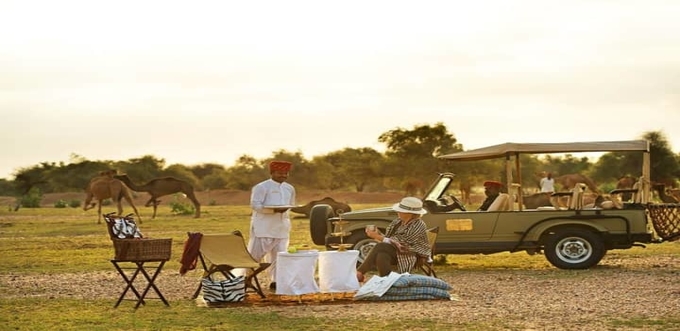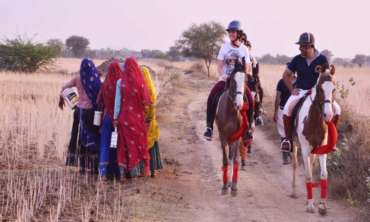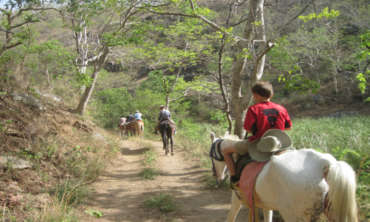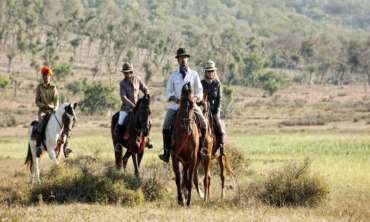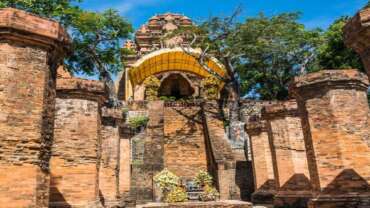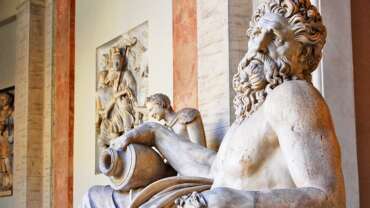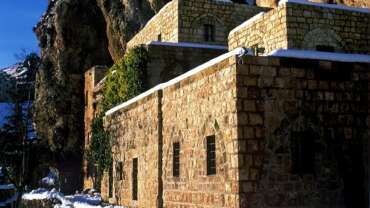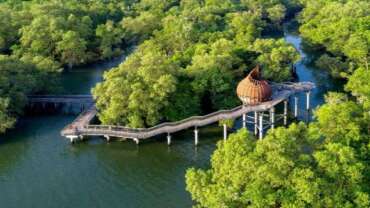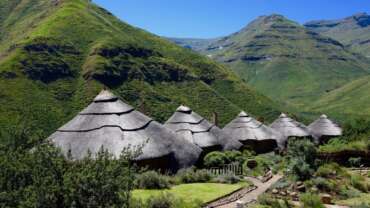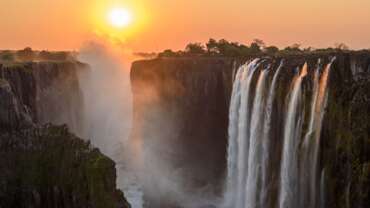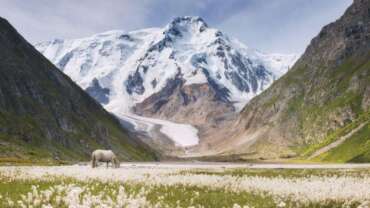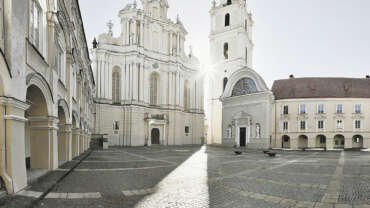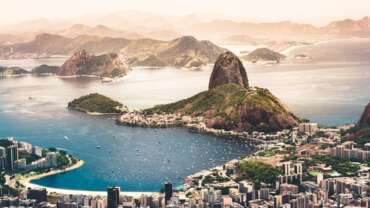Charity Challenge in India
Let us invite you on a Charity Challenge through sacred cities, rolling green hills of tea and the bustling modernity of India, exploring the hidden treasures and spell-binding diversity of this Incredible Country’s must-see destinations.
Stunning palaces, exciting game reserves and unparalleled natural beauty, take the off the beaten routes through India as the allure of an era of decadence and wealth beckons, where the majestic Taj Mahal and picturesque Ranthambore National Park are yours to discover.
At Charity Tours, we carefully handpick each and every unforgettable Charity Challenge to ensure that our innovative itineraries continue to set the standard for your unforgettable charity challenge in India.
History of India
Located in the continent of Asia, India covers 2,973,193 square kilometers of land and 314,070 square kilometers of water, making it the 7th largest nation in the world with a total area of 3,287,263 square kilometers. Surrounded by Bhutan, Nepal, and Bangladesh to the North East, China to the North, Pakistan to the North West and Sri Lanka of the South East coast.
India is a land of ancient civilizations. India’s social, economic, and cultural configurations are the products of a long process of regional expansion. Indian history begins with the birth of the Indus Valley Civilization and the coming of the Aryans. These two phases are usually described as the pre-Vedic and Vedic age. Hinduism arose in the Vedic period.
The fifth-century saw the unification of India under Ashoka, who had converted to Buddhism, and it is in his reign that Buddhism spread in many parts of Asia. In the eighth century, Islam came to India for the first time and by the eleventh century had firmly established itself in India as a political force. It resulted in the formation of the Delhi Sultanate, which was finally succeeded by the Mughal Empire, under which India once again achieved a large measure of political unity.
It was in the 17th century that the Europeans came to India. This coincided with the disintegration of the Mughal Empire, paving the way for regional states. In the contest for supremacy, the English emerged ‘victors’. The Rebellion of 1857-58, which sought to restore Indian supremacy, was crushed; and with the subsequent crowning of Victoria as Empress of India, the incorporation of India into the empire was complete. It was followed by India’s struggle for independence, which we got in the year 1947. Here is a brief timeline about the history of India:
Ancient India History
The History of India begins with the Indus Valley Civilization and the coming of the Aryans. These two phases are generally described as the pre-Vedic and Vedic periods. The earliest literary source that sheds light on India’s past is the Rig Veda. It is difficult to date this work with any accuracy on the basis of tradition and ambiguous astronomical information contained in the hymns. Indus valley civilization, which flourished between 2800 BC and 1800 BC, had an advanced and flourishing economic system. The Indus valley people practiced agriculture, domesticated animals, made tools and weapons from copper, bronze, and tin and even traded with some Middle East countries.
The Indus Valley Civilization
A long time ago, in the eastern world, there rose a few civilizations. The main reasons for the rise of these urban civilizations were access to rivers, which served various functions of human beings. Along with the Mesopotamian civilization and the Egyptian civilization, rose the Indus Valley civilization spanning Northwest India and modern-day Pakistan. The largest amongst the three civilizations, the Indus Valley civilization flourished around 2600 BC, at which time agriculture in India started flourishing. The fertile Indus valley made it possible for agriculture to be carried out on a large scale. The most well-known towns of the Indus Valley in today’s date are Mohenjo Daro and Harappa. Unearthing these two towns showed excavators glimpses into the richness of the Indus Valley civilization, evidenced in ruins and things like household articles, war weapons, gold and silver ornament – and so on. The people of the Indus Valley civilization lived in well-planned towns and well-designed houses made of baked bricks. In an era of developments and prosperity, civilization, unfortunately, came to an end by around 1300 BC, mainly due to natural calamities.
Vedic Civilization
The next era that India saw was that of the Vedic civilization, flourishing along the river Saraswati, named after the Vedas, which depict the early literature of the Hindus. The two greatest epics of this period were the Ramayana and the Mahabharata, still held in great reverence by the followers of Hinduism.
Buddhist Era
Next came the Buddhist era, during the time of the Mahajanapadas which were the sixteen great powers, during the 7th and the 6th centuries BC. Prominent powers at the time were the Sakyas of Kapilavastu and the Licchavis of Vaishali. Buddha, whose original name was Siddhartha Gautam, was born in Lumbini near Kapilavastu and was the founder of Buddhism – a religion based on spiritualism. He died at the age of 80 in 480 BC but his teachings spread throughout southern and eastern Asia and are followed across the world today.
The Invasion of Alexander
When Alexander invaded India in 326 BC, he crossed the Indus river and defeated the Indian rulers in battle. Noteworthy of the Indians’ attempts at war, was the use of elephants, something that the Macedonians had never seen before. Alexander then took over the lands of the defeated kings.
The Gupta Dynasty
The Gupta period has been referred to as the Golden Age of Indian history. When Chandragupt I received the gift of Pataliputra in dowry when he married the daughter of the chief of the ‘Licchavis’, he started to lay down the foundation of his empire, which extended from the river Ganges or the Ganga to the city of Allahabad. He ruled for 15 years and was also referred to as the ‘king of kings’ for his strategic conquests and the flourishing state of India.
Harshavardhana
The last of the ancient kingdoms in India was by the king Harshavardhana, who ascended the throne at Thanneshwar and Kannauj after his brother died. While successful in a few of his conquests, he eventually got defeated by the Chalukya Kingdom of Deccan India. Harshavardhana was well-known for establishing relations with the Chinese, and also for having high religious tolerance and strong administrative capabilities.
Medieval Indian History
The medieval history of India is renowned for deriving a lot of its character from Islamic kingdoms. Extending across almost three generations, medieval India included a number of kingdoms and dynasties:
– The Chalukyas
– The Pallavas
– The Pandyas
– The Rashtrakutas
– The Cholas
The Cholas were the most important rulers at this time, the 9th Century AD. Their kingdom covered a large part of South India, including Sri Lanka and the Maldives. While the rulers ruled bravely and carried out the annexation of multiple territories in India, the empire came to an end in the 14th Century AD with an invasion by a man named Kafur Malik. The monuments from the Chola Dynasty are still intact and are known for their rustic charm.
The next major empire was that of the Mughals, preceded by a rise in Islamic rulers. The invasion of Timur was a significant point in Indian history before a Hindu revival movement called the Bhakti movement, came to be. Finally, in the 16th Century, the Mughal empire started to rise. One of the greatest empires of India, the Mughal empire was a rich and glorious one, with the whole of India united and ruled by one monarch. The Mughal Kings were Babar, Humayun, Sher Shah Suri (not a Mughal king), Akbar, Jehangir, Shah Jahan, and Aurangzeb. They were responsible for setting up efficient public administration, laying out infrastructure, and promoting the arts. A large number of monuments in India today exist from the Mughal period. The death of the last Mughal King, Aurangzeb, sowed the seeds of disintegration within India. Influencers of Islamic architecture in India, the Mughal kings are still looked back in awe.
Akbar
Emperor Akbar, also known as Akbar the Great or Jalaluddin Muhammad Akbar, was the third emperor of the Mughal Empire, after Babur and Humayun. He was the son of Nasiruddin Humayun and succeeded him as the emperor in the year 1556 when he was only 13 years old.
Shah Jahan
Shah Jahan, also known as Shahbuddin Mohammed Shah Jahan, was a Mughal Emperor who ruled in the Indian Subcontinent from 1628 to 1658. He was the fifth Mughal ruler, after Babur, Humayun, Akbar, and Jahangir. Shah Jahan succeeded the throne after revolting against his father, Jahangir.
Chhatrapati Shivaji
Chatrapati Shivaji Maharaj was the founder of the Maratha Empire in western India. He is considered to be one of the greatest warriors of his time and even today, stories of his exploits are narrated as a part of the folklore. King Shivaji used the guerrilla tactics to capture a part of, the then, dominant Mughal empire.
Modern Indian History
During the late 16th and the 17th Centuries, the European trading companies in India competed with each other ferociously. By the last quarter of the 18th Century, the English had outdone all others and established themselves as the dominant power in India. The British administered India for a period of about two centuries and brought about revolutionary changes in the social, political and economic life of the country.
However, the zenith of colonisation was achieved when the British arrived in the early 1600s as traders. Capitalizing on the disintegration that existed in India after the Mughal rule, the British actively used the strategy of ‘divide-and-rule’ to rule over India for over 2 centuries. While the British had come in earlier, they only achieved political power in 1757 AD after the Battle of Plassey.
They took a keen interest in the resources that India had to offered and have been looked back at as plunderers of India’s wealth of resources – as they took cotton, spices, silk, and tea, amongst numerous other resources. While they did lay out a massive chunk of India’s infrastructure, by also bringing the Indians steam engines, it is seldom looked back at as an equal relationship. The British Raj was divisive and pit Indians against one another, on the basis of religion; and also mistreated the laborers. The Indians were essentially slaves of the British rule and were working hard without any returns on their work. This, naturally, led to multiple mutinies; and prominent freedom fighters came to the forefront. Different ideologies of thought believed that there were different ways of gaining freedom; however, they all had one common goal – freedom.
The British queen had asserted that the aim of the British was to help India progress – however, multiple problems arose without the consultation of Indian leaders. One important instance of this was when in the First World War, Britain launched an attack on Germany on behalf of India, even though India did not wish for that to happen; and millions of Indian soldiers were at the forefront of the British Indian Army during both the world wars – further fuelling the Indian resistance. Over a million Indian soldiers were killed in both the World Wars.
People of India
Ethnic groups
India is a diverse multiethnic country that is home to thousands of small ethnic and tribal groups. That complexity developed from a lengthy and involved process of migration and intermarriage. The great urban culture of the Indus civilization, a society of the Indus River valley that is thought to have been Dravidian-speaking, thrived from roughly 2500 to 1700 bce. An early Aryan civilization—dominated by peoples with linguistic affinities to peoples in Iran and Europe—came to occupy northwestern and then north-central India over the period from roughly 2000 to 1500 bce and subsequently spread southwestward and eastward at the expense of other indigenous groups.
Despite the emergence of caste restrictions, that process was attended by intermarriage between groups that probably has continued to the present day, despite considerable opposition from peoples whose own distinctive civilizations had also evolved in early historical times. Among the documented invasions that added significantly to the Indian ethnic mix are those of Persians, Scythians, Arabs, Mongols, Turks, and Afghans. The last and politically most successful of the great invasions—namely, that from Europe—vastly altered Indian culture but had relatively little impact on India’s ethnic composition.
Broadly speaking, the peoples of north-central and northwestern India tend to have ethnic affinities with European and Indo-European peoples from southern Europe, the Caucasus region, and Southwest and Central Asia. In northeastern India, West Bengal (to a lesser degree), the higher reaches of the western Himalayan region, and Ladakh (in Jammu and Kashmir state), much of the population more closely resembles peoples to the north and east—notably Tibetans and Burmans. Many aboriginal (“tribal”) peoples in the Chota Nagpur Plateau (northeastern peninsular India) have affinities to such groups as the Mon, who have long been established in mainland Southeast Asia. Much less numerous are southern groups who appear to be descended, at least in part, either from peoples of East African origin (some of whom settled in historical times on India’s western coast) or from a population commonly designated as Negrito, now represented by numerous small and widely dispersed peoples from the Andaman Islands, the Philippines, New Guinea, and other areas.
Languages
There are probably hundreds of major and minor languages and many hundreds of recognized dialects in India, whose languages belong to four different language families: Indo-Iranian (a subfamily of the Indo-European language family), Dravidian, Austroasiatic, and Tibeto-Burman (a subfamily of Sino-Tibetan). There are also several isolate languages, such as Nahali, which is spoken in a small area of Madhya Pradesh state. The overwhelming majority of Indians speak Indo-Iranian or Dravidian languages.
The difference between language and dialect in India is often arbitrary, however, and official designations vary notably from one census to another. That is complicated by the fact that, owing to their long-standing contact with one another, India’s languages have come to converge and to form an amalgamated linguistic area—a sprachbund—comparable, for example, to that found in the Balkans. Languages within India have adopted words and grammatical forms from one another, and vernacular dialects within languages often diverge widely. Over much of India, and especially the Indo-Gangetic Plain, there are no clear boundaries between one vernacular and another (although ordinary villagers are sensitive to nuances of dialect that differentiate nearby localities). In the mountain fringes of the country, especially in the northeast, spoken dialects are often sufficiently different from one valley to the next to merit classifying each as a truly distinct language. There were at one time, for example, no fewer than 25 languages classified within the Naga group, not one of which was spoken by more than 60,000 people.
Lending order to the linguistic mix are a number of written, or literary, languages used on the subcontinent, each of which often differs markedly from the vernacular with which it is associated. Many people are bilingual or multilingual, knowing their local vernacular dialect (“mother tongue”), its associated written variant, and, perhaps, one or more other languages. The constitutionally designated official language of the Indian central government is Hindi, and English is also officially designated for government use. However, there are also 22 (originally 14) so-called “scheduled languages” recognized in the Indian constitution that may be used by states in official correspondence. Of those, 15 are Indo-European (Assamese, Bengali, Dogri, Gujarati, Hindi, Kashmiri, Konkani, Maithili, Marathi, Nepali, Oriya, Punjabi, Sanskrit, Sindhi, and Urdu), 4 are Dravidian (Kannada, Malayalam, Tamil, and Telugu), 2 are Sino-Tibetan (Bodo and Manipuri), and 1 is Austroasiatic (Santhali). Those languages have become increasingly standardized since independence because of improved education and the influence of mass media. English is an “associate” official language and is widely spoken.
Most Indian languages (including the official script for Hindi) are written by using some variety of Devanagari script, but other scripts are used. Sindhi, for instance, is written in a Persianized form of Arabic script, but it also is sometimes written in the Devanagari or Gurmukhi scripts.
Religions
Because religion forms a crucial aspect of identity for most Indians, much of India’s history can be understood through the interplay among its diverse religious groups. One of the many religions born in India is Hinduism, a collection of diverse doctrines, sects, and ways of life followed by the great majority of the population. For an in-depth discussion of the major indigenous religions of India, see the articles Hinduism, Jainism, Buddhism, and Sikhism. Philosophical ideas associated with those religions are treated in Indian philosophy. For further discussion of other major religions, see Islam and Christianity.
Art & Culture of India
The land where classical melodies merge seamlessly with a mesmerising mosaic of exquisite paintings, ancient weaves and other handicrafts, divine dance forms, fascinating festivals and scintillating sculptures, India is a vibrant potpourri of arts and crafts. With each of its states and union territories bursting with ethnic flavours that multiply at every turn, the country sparkles with vitality and vivacity.
Be it the gorgeous and remarkably intricate Bidriware in Bidar or the beautiful pink-kissed meenakari jewellery of Agra city, the roots of these crafts are embedded in various eras of history. While the premium heavy-weight silk Kanjeevaram sarees of Kanchipuram found a humble beginning during the reign of the Pallava kings (275 CE to 897 CE), the chikankari embroidery of Lucknow is said to be the endowment of Mughal empress, Nur Jahan, in the 17th century, who herself was a master of the craft.
To savour the nuances of India’s diverse cultural palate, deep dive into some of the most awe-inspiring archives of the country’s arts and crafts.
Dance Forms
Dance is an eloquent form of expression. From classical and traditional to folk and tribal, there are various dance forms in India. The most popularly recognised classical dance forms are eight, which find themselves steeped in a rich mythological and religious history and have been mentioned in the ancient Hindu text of Natya Shastra. These are Bharat Natyam (Tamil Nadu), Sattriya (Assam), Manipuri (Manipur), Kathak (northern and western India), Odissi (Odisha), Kuchipudi (Andhra Pradesh and Telangana), Kathakali (Kerala), Mohiniyattam (Kerala).
Musical Forms
Music has been as integral a part of the socio-religious expressions of cultural values as dance in India. The most important classical traditions of music in India are the Hindustani classical tradition which finds home in the northern and western parts of the country and the Carnatic classical tradition, which is practiced primarily in the southern parts of the country. Other important as well popular musical traditions involve the Sufi tradition (throughout Northern and Western India), the Rabindra Sangeet (West Bengal) and Bihu (Assam) among others. If one wants a more local and folk flavour in one’s music, India has a lot to offer even there. One can choose from the Marathi Lavani, Uttarakhandi music, North Indian Thumri, Dadra, Ghazal, Qawwali or even the Tamang Selo, a musical tradition prominent in Nepal but equally popular in many parts of India.
A number of these musical formats and traditions have now fused with each other and with more western musical patterns to create what is popular as Bollywood music.
A music enthusiast should savour the wildly different musical forms though musical festivals like the Dover Lane Music Conference in Kolkata, Ruhaniyat across the country, Sankat Mochan Sangeet Samaroh in Varanasi, Udaipur World Music Festival, Ziro festival of Music in Arunanchal Pradesh and Sunburn and Sula Fest in Maharashtra.
Paintings
The earliest paintings found in India were scratched onto the walls of caves. There are also the famous wall frescoes at the Kailash temple at Ellora, which showcase the advancement in aesthetic techniques as well as sensibilities in the Indian subcontinent. Ellora is considered the finest examples of rock-cut architecture, and comprises Hindu, Buddhist and Jain caves that were chiselled between the 4th and the 9th century.
The focus of the much more nuanced visual art tradition of India through the ages has similarly been one of the most important and prized aspects of culture. There are many schools of paintings throughout the country and even if one spends a whole lifetime exploring these aesthetic cultures, one can barely begin to scratch the surface. But for a beginner, here are some of the most historically prominent schools that one should admire.
Miniature Paintings, as the name suggests were small in size but wonderfully detailed. The Mughal painting techniques were inspired by the Persian rulers in North India and this school of painting had a lot of impact on the genre of miniature paintings as well.
Another school of painting which has some overlapping features is the school of Pahari painting. It was mostly practiced by Rajputs and because a number of their kingdoms were either overtaken by the Mughals or were always in close connect with them, one can see the influence of Mughal painting seeping into this technique as well.
For any art enthusiast, Mysore paintings are a treat. Traditionally created from organic sources and embellished with gold foil, these paintings look divine, to say the least. And that is not just because they are primarily depictions of religious figures.
Tanjore painting is another art form which finds its home in the southern part of the country. It is also primarily religious in its inspiration and is known for its vivid colours, gold foil work as well as in the inclusion of glass beads to create a rich effect.
Another important painting technique is the folk art of Madhubani from central India. The paintings are done either on cloth or on paper and include a lot of nature-inspired motifs and designs.
Textiles
The beauty of luxurious Indian silks, weaves, prints, patchwork, embroidery work, stitch work and the vibrant colours and patterns are things of legend from time immemorial. History is full of the many quests that have been made for these treasures. Merchants from many distant shores have dared the perils of the sea for Indian cloth and designs as much as for spices. To dive into this opulent world is to be lost forever. But for the casual observer, here is a crash course in some of the most exquisite textile and design patterns in the country.
The Pashmina, from Jammu and Kashmir, is one of the most coveted and expensive of all woollen textiles in the country. The Union Territory is also famous for its distinctive and intricate embroidery techniques called Kashidari and Aari. For the lovers of embroidery and stitch work, the famous chikankari work from Uttar Pradesh, Kantha from West Bengal and Odisha, Pulkari from Punjab, zardozi from central India, patchwork from Rajasthan and mirror work from Gujarat are just some of the popular examples.
The number of varieties of silk available throughout the country is astounding. From the quaint and graceful Chanderi silk, one can find variations like Bhagalpuri silk, Munga Silk, Mysore silk, Kuchai silk to the extravagant Kanjeevaram silks and Benarasee silks.
Cinema
The hub of Hindi cinema and the powerhouse of Hindi film industry, Bollywood is based in Mumbai. Producing about 800 films a year, the industry ropes in almost 14 million national viewers annually. A beguiling Indian counterpart of the famous Hollywood industry, Bollywood invites actors and audiences from all over the country. Some of the best movies in the world have been given by Bollywood. These include highly venerated Pather Panchali by Satyajit Ray, Mother India by Mehboob Khan, Salaam Bombay by Miran Nair, Lagaan by Ashutosh Gowariker and many others. The industry boasts some of the most eloquent and talented artistes that have earned a name for themselves internationally. Besides, there are state-specific cinemas as well like Tollywood, which makes films in Telugu, and Bhojpuri that is centred around Bihar.
Besides, National School of Drama (New Delhi), Satyajit Ray Film and Television Institute (Kolkata), Asian Academy of Film and Television (Mumbai), Centre for Research in Arts, Film and Television (New Delhi), etc., are some of the prestigious centres where artistes are trained.
Fairs & Festivals
Festivals in India are a vibrant representation of the culture and ancient traditions of the country. The most prominent celebration is that of Diwali, which is popularly called the festival of lights, celebrated in October or November. Like most festivals in the country, its story is rooted in myths, legends and religion. It is said that Lord Rama returned him on this day after a 14-year-long exile. The people in his kingdom were so happy that they lit diyas (earthen lamps) in their houses to welcome him. Today, thousands of people decorate their homes with candles and diyas and burst crackers to mark the occasion. This is done after the customary puja rituals.
Another major festival is Holi, called the festival of colours. It generally falls in March. During Holi, people smear each other’s faces with colours and throw water balloons at friends and family. A fiesta of fun and food, Holi sees people coming together to exchange presents and burn a holy bonfire that marks the burning of all evil. Many signature dishes like gujiya (deep-fried sweet dumpling), dahi vada (a snack served with yoghurt), thandai (beverage made with almonds, rose petals, watermelon kernels, cardamom), and pakora (fritters) are prepared during the festivities.
Eid is celebrated all over the country after the holy month of Ramadan comes to a close. While Muslims observe austere fasting throughout Ramadan, Eid is the occasion of feasting and translated means festival of breaking the fast. On this day, devotees offer prayers at the mosque and exchange greetings of “Eid Mubarak” with each other.
Celebrated on December 25 as the birth of Jesus Christ, Christmas is the major festivals of Christians. On Christmas Eve, churches all over the country observe a mass, where prayers and worship are offered to the lord. The next day festivities begin and people get together to feast on delicious cakes and dishes.
Celebrated all over the state of Kerala, Onam is the most popular festival of Malayalis. Spanning over ten days, Onam starts on Atham day and lasts till Thiru Onam or Thiruvonam, meaning sacred Onam day. This unique festival brings the colours and cultures of the state into the limelight, when people across Kerala prepare to have a grand time. On the first day, a street parade is organised that sees caparisoned elephants, carnival floats, brightly dressed dancers and musicians, and various other artistes.
Ratha Yatra (also popularly referred to as the Chariot Festival) is one of the most important Hindu festivals in India. The festival, most elaborately organised in Puri, is held annually during the Hindu calendar month of Asadha, which falls on the second day of the lunar fortnight during June and July. The main deity worshipped during the festival is Lord Jagannath, an incarnation of Lord Vishnu. The festival is marked by the transportation of the idols of Lord Jagannath, Lord Balabhadra and Goddess Subhadra in three different chariots to their summer temple for a week.
Besides these, there are numerous other festivals in which make across the country make merry, and welcome the spring, a new harvest, or deities and gods. Some of the more prominent ones are Gurupurab, which is celebrated as the birthday of Guru Nanak Dev, Janmashtmi, celebrated as the birthday of Lord Krishna, Durga Puja, Raksha Bandhan, Baisakhi, etc.
There is a celebration in almost every corner of India throughout the year, and many carnivals and fairs are organised across the length of the country. Some of the must-attend festivities are :
The city of Kochi lights up during the Cochin Carnival that is a celebration of life and vigour. Generally, held during the last two weeks of December, the carnival hosts multiple competitions and activities like vadam vali (tug of war), kalam vara (floor art), beach football, swimming, marathon racing, cycle racing, bullet racing, kayaking, boxing, kabaddi and beach bike racing. For those with a mellower spirit, art shows, musical concerts and elaborate rallies can be an amazing option. A major attraction in the carnival is the burning of the effigy of Papanai between December 31 and January 1. This is done to bid goodbye to the past year and welcome the new one.
One of the most prominent festivals of the state of Karnataka, Mysuru Dasara is a celebration of the victory of good over evil. The festival of Dasara has a centuries-old association with the palace of Mysore. It falls in October or November and has been celebrated for the last 400 years. The 10-day festivities end with a grand procession, which takes off from Mysore Palace and culminates at Bannimantap. Observed as the state festival of Karnataka (Nadahabba), Dasara witnesses the Mysore palace illuminated like never before.
One of the best festivals in not just the state of Goa but also the whole of India, Goa Carnival draws people in droves. This unique festival has been celebrated since the 18th century after it was introduced by the erstwhile Portuguese rulers of Goa. Music, dancing and revelry make up this three-day non-stop extravaganza in the state. Colourful parades with floats are taken out all over Goa.
The Taj Mahotsav, in Agra, is an annual 10-day-long celebration of art, craft, culture and cuisine at Shilpgram near the eastern gate of the Taj Mahal. It brings together artisans from other parts of the country and gives them a platform to showcase and sell their work to travellers from across India and the world. Besides craftsmanship and food, the festival also offers travellers an experience of India’s many folk traditions. A series of folk music and dance performances from various regions across the country are a highlight of the Taj Mahotsav.
The Rann Utsav is a fun festival that takes place annually at the Rann of Kutch, in Gujarat. A vibrant carnival that brims with song, dance, culture, adventure and art, it is said that during it, the beauty of the pristine land of Bhuj is accentuated on full moon nights. Golf carts, ATV rides, paintball, camel safaris, game cart excursions, paramotoring, and horse and camel rides are also a part of the celebration. Those looking for peace and relaxation can participate in various meditation and yoga sessions conducted during the festival.



